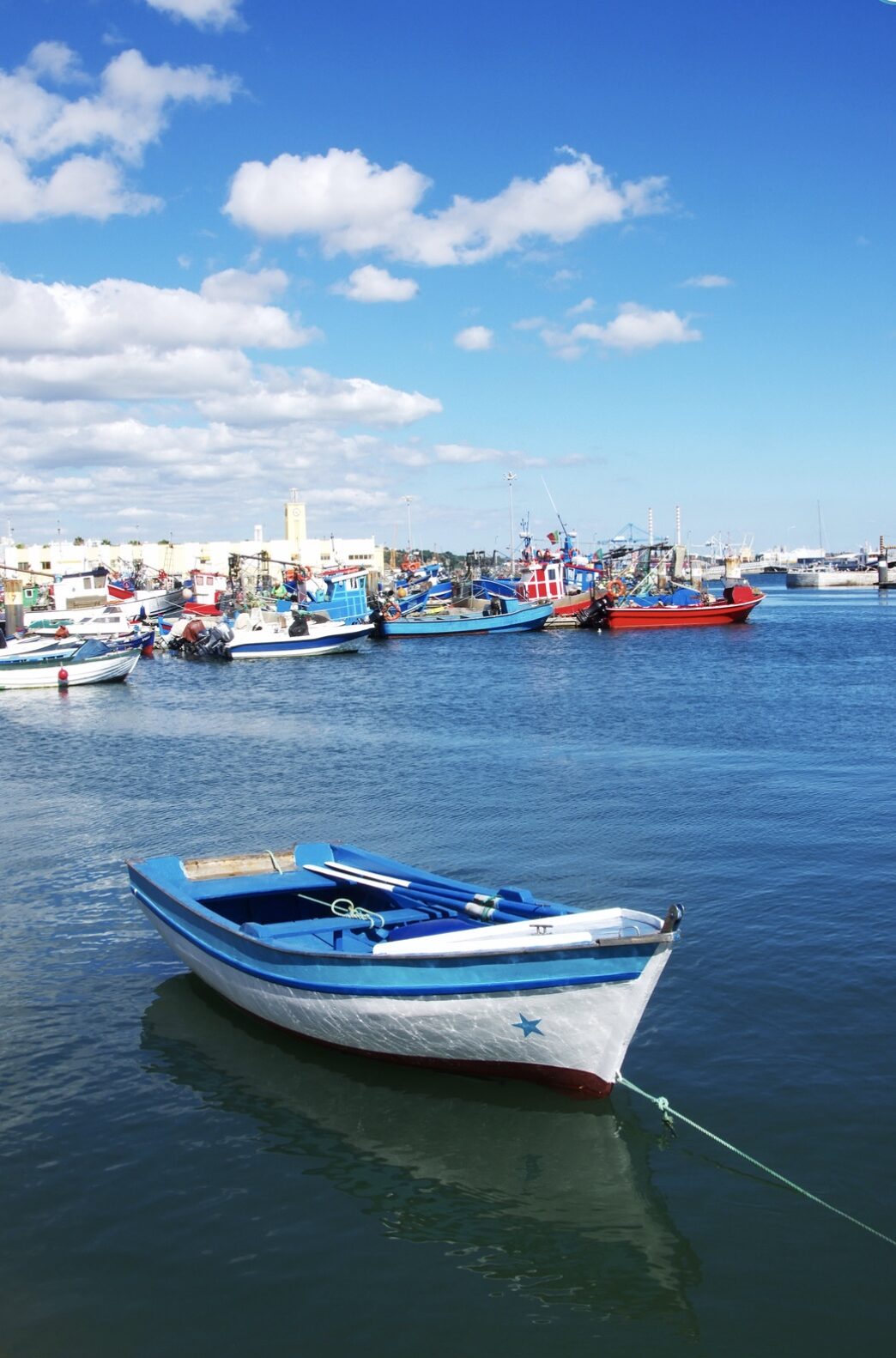SETÚBAL: A DAY TRIP FROM LISBON FILLED WITH HISTORY, SEA CULTURE AND INCREDIBLE CUISINE
When you travel to Portugal you’ll naturally find that at our capital city you have a very good representation of the distinct regional cuisines from across Portugal. Indeed, during our Original Lisbon & Wine Food Tour we explore the typical bites from Lisbon, but also iconic foods from across the nation, washing it all down with selected wines from Portugal’s distinct wine regions.
No matter how wonderful the food and drink offerings are around Lisbon, we would always encourage you to step away from the capital, even if it is for a day trip. This will give you the chance to experience local life away from touristic areas and, above all, to get a sense of the cultural and gastronomic nuances of different parts of Portugal.
Setúbal is just 30Km (19 miles) away from Lisbon and it is one of our favorite destinations as a day trip from the city. When we talk about Setúbal, we are referring to the city in itself but also the district of Setúbal, which encompasses several municipalities with their own particular feel, which we will also get to explore in brief below.
The city’s location is stunning, just by the estuary of the Sado river and neighboring the wilderness of Arrábida Natural Park, which awakens our most adventurous side. This city is also where one of Portugal’s busiest fresh food markets is located, showcasing the intrinsic relationship that setubalenses have always had with the sea and with fishing as a way of making a living.
If Setúbal is not yet a part of your Portuguese trip itinerary, we would like to contribute towards reconsidering that…
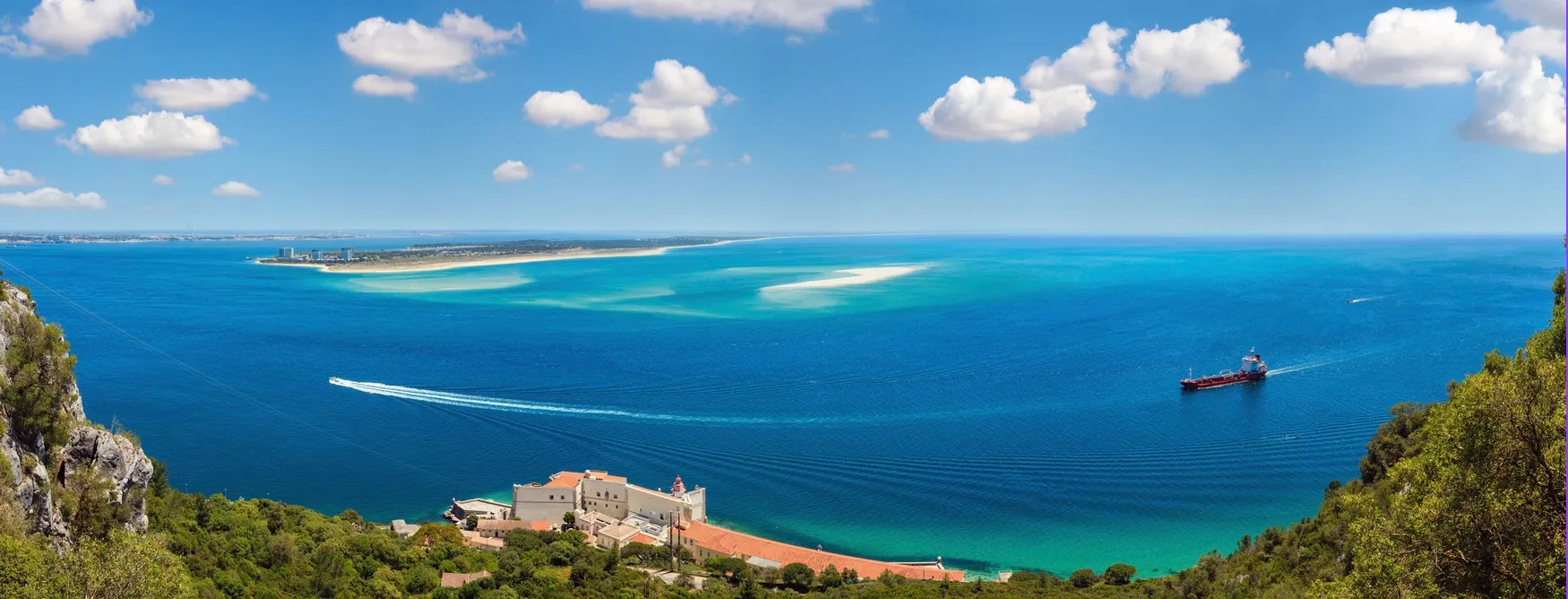
View from Arrábida
How to get to Setúbal from Lisbon
It is so easy to get to Setúbal from Lisbon’s city center! If you are planning to explore the district including Setúbal itself, perhaps checking out the beaches and even some of the surrounding towns, we would definitely recommend renting a car, as it will help you get around and save time, thus making the most of your day.
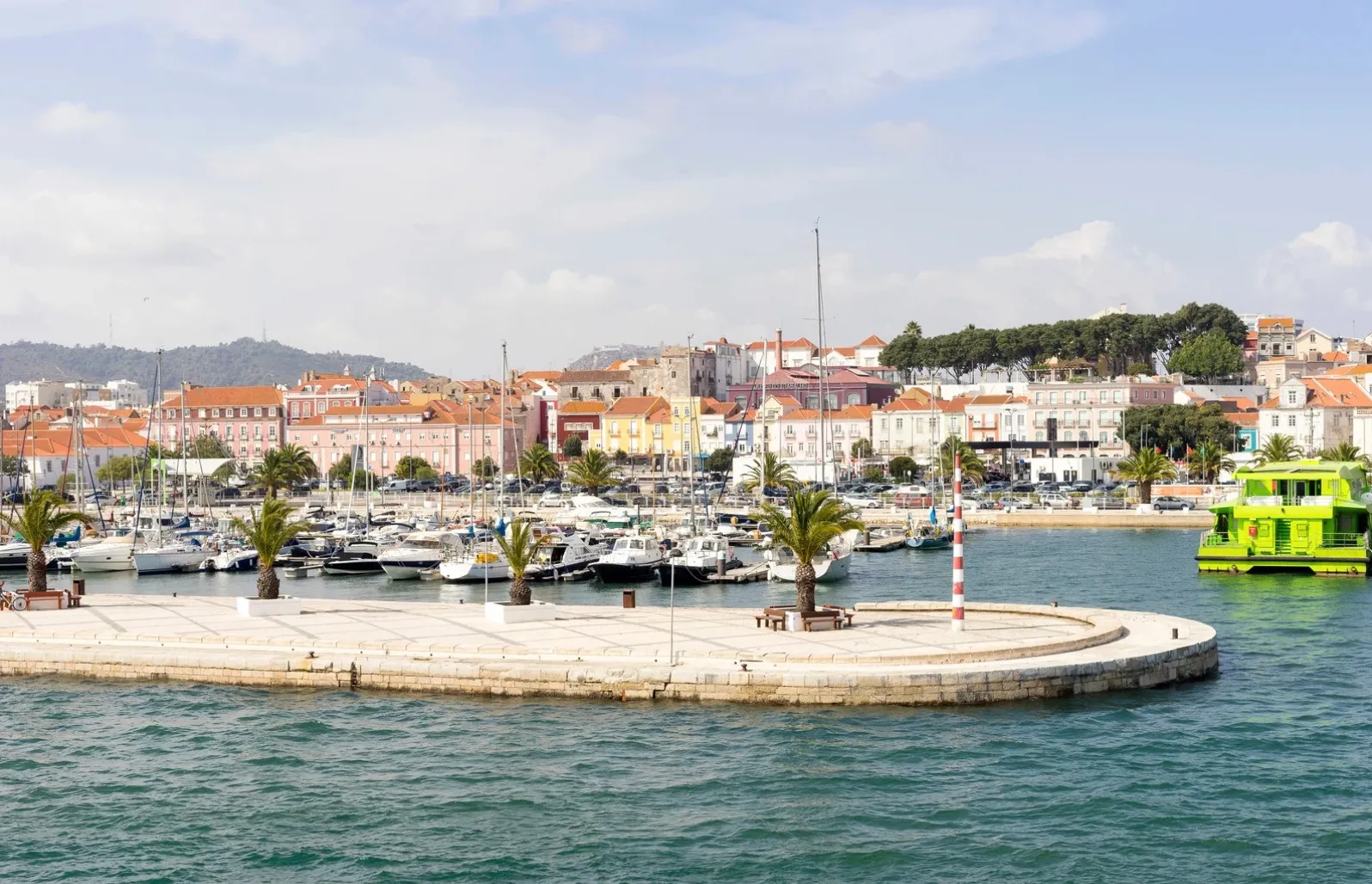
Setúbal city and the ferry to Troia
But if you are using public transportation, fear not, as the trip from Lisbon to Setúbal is very doable and rather quick! You can take a train by the company Fertagus (check the timings and plan your trip here), which has several departure points in Lisbon’s city center, namely the railway stations of Roma–Areeiro, Entrecampos, Sete Rios and Campolide. Depending on the date and time, trains to Setúbal run either every half an hour or every hour, and the journey takes around 50 minutes. This is a comfortable trip in which you also get to experience crossing the iconic 25 de Abril bridge under the car lane, with eye-catching vistas to the Tagus river.
Another alternative way of getting to Setúbal would be to cross to the south bank of the Tagus river by boat (TTSL company), from Terreiro do Paço to Barreiro. From Barreiro you could hop on the CP train that leaves from right nearby the boat station itself. Depending on the day and connections, the total trip time shouldnt vary all that much but, in this case, you would have to switch transportation methods.
Whether you start your train trip in Lisbon or already on the south bank of the river, the train takes you right to Setúbal’s city center, a perfect starting point for you to explore not only the city’s historical center (where as we will see next there are plenty of worthwhile food stops), but also the waterfront. From here, you could also take further transportation to other destinations, namely the beaches and several spots which belong to Arrábida’s natural protected area.
Setúbal and the sea
Setúbal in Roman times: preserving fish with salt and garum fermented sauce making
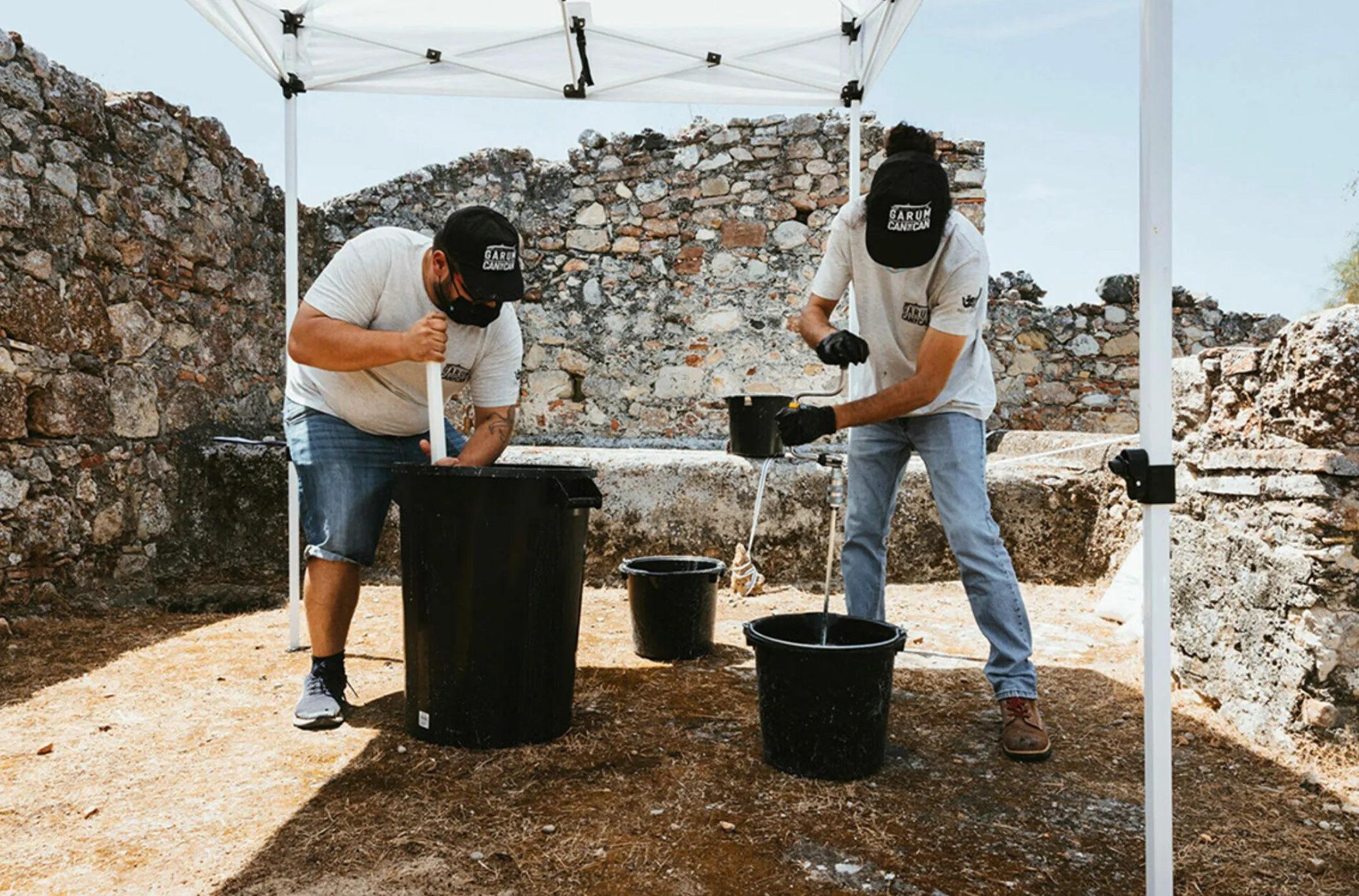
The team during the process of making garum, in Troia (© Maria Motta Veiga)
We see that, even as early as around 2000 years ago, during the time when Portugal was a part of the Roman Empire which extended pretty much all over what is Europe today, Setúbal’s relationship with the sea was already pretty intense.
It was in Troia, by the banks of the Sado river, where today lies a recuperated archaeological site, where one of the biggest artisanal plants for fish preservation those days was operating. Eating around Portugal today you’ll easily recognize that we have a fondness for curing fish with salt, something that is mostly done with bacalhau, that is, codfish, one of the most beloved ingredients in Portugal – note the name of our company, Oh! My Cod! Even though cod only became a part of the Portuguese diet after the Age of Explorations started in the 1500s, preserving fish with salt had been a part of the local culinary traditions for more than a millenia prior to that.
Salt has historically been a very relevant product for the Portuguese economy, and one that we do have abundance of. During Roman times, sal was used to make garum, a preserved fish sauce that was to Romans a prized condiment, not only because it packed a ton of flavor, but because it was also a way of preserving and developing flavors using small fish and fish scraps that would otherwise easily go to waste.
Garum has a fascinating history, which we explore during our Umami and Garum Lisbon Food Tour, where you get to try, amongst other fish delicacies, the umami bomb that is garum.
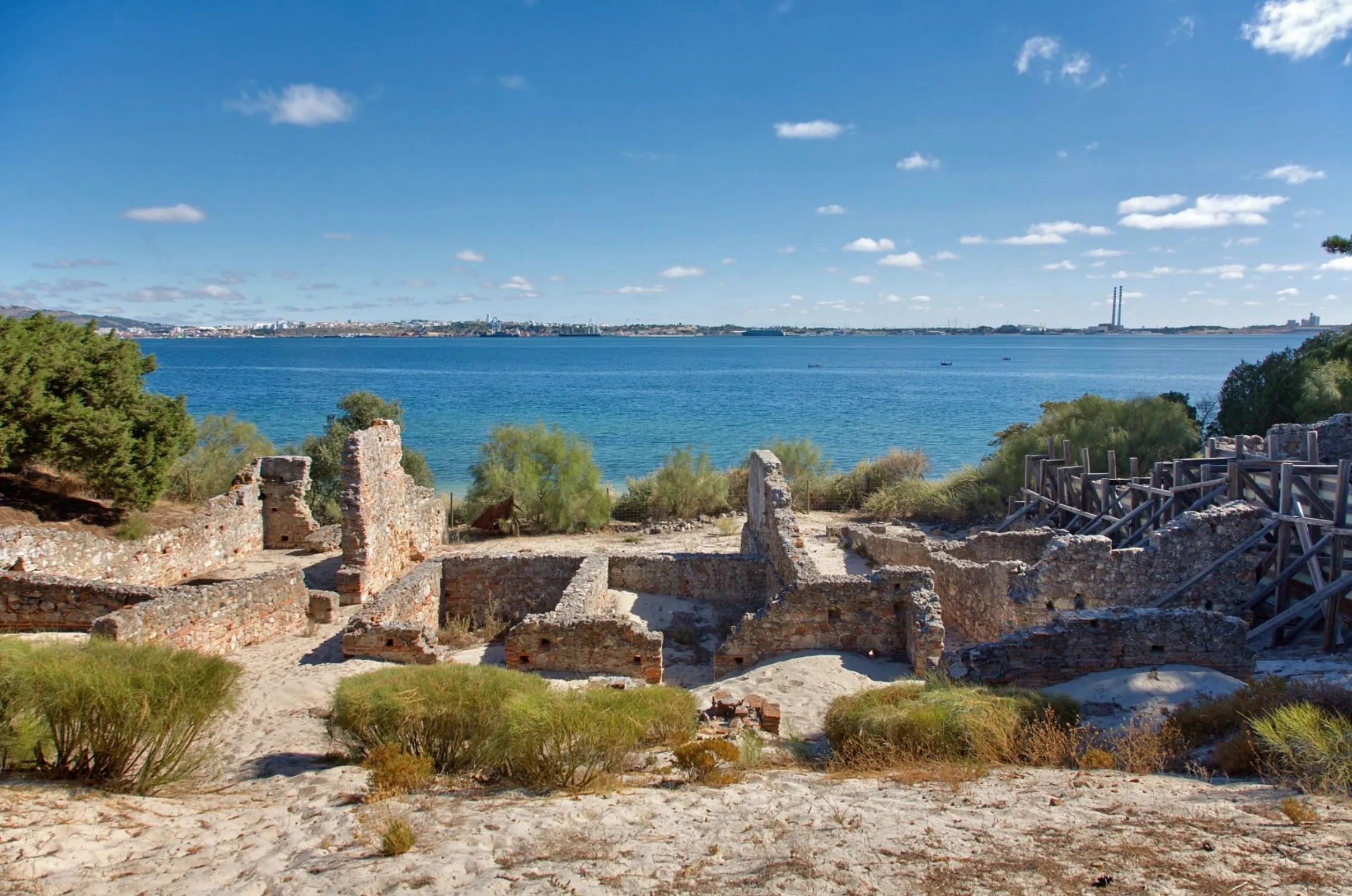
Troia ruins (© Setúbal Municipality)
Even though it rose to fame as the most relevant condiment during Roman days, garum was already being produced by the Greeks prior to that. If around two millennia ago it gained great popularity across the continent, it was precisely here in Troia, near Setúbal, where the biggest production of his ultra savory fermented fish sauce was being done.
While the art of garum making was lost over the centuries, it was in recent times recuperated thanks to the Selo do Mar project, which aims to investigate more about fish preservation methods, not only from a theoretical standpoint, but to actually recover techniques and use tradition as a base point from where to innovate further. The project Selo do Mar also wants to encourage the increased consumption of fish species which are usually considered to be less premium by consumers and the market as a whole, while promoting the full use of the fish, avoiding waste. They do what is called in the world of meat head to tail, an approach which is historically very common with protein such as pork, but not as much with fish. This is how you end up with creative and ridiculously delicious fish products such as fish terrine, tuna muxama (which is to tuna fish what cured ham is to pork), bottarga, pastrami or foie gras, which can be prepared with the the liver of different species, but excels particularly with monkfish. Selo do Mar project is doing a great deal not only to document ancient ways of preserving and eating fish in Portugal but, what is even more relevant, paving the path for how we can keep consuming fish in the country, acknowledging that is is a limited resource and we can and should make the best use of it sustainably, without compromising nutrition and flavor!
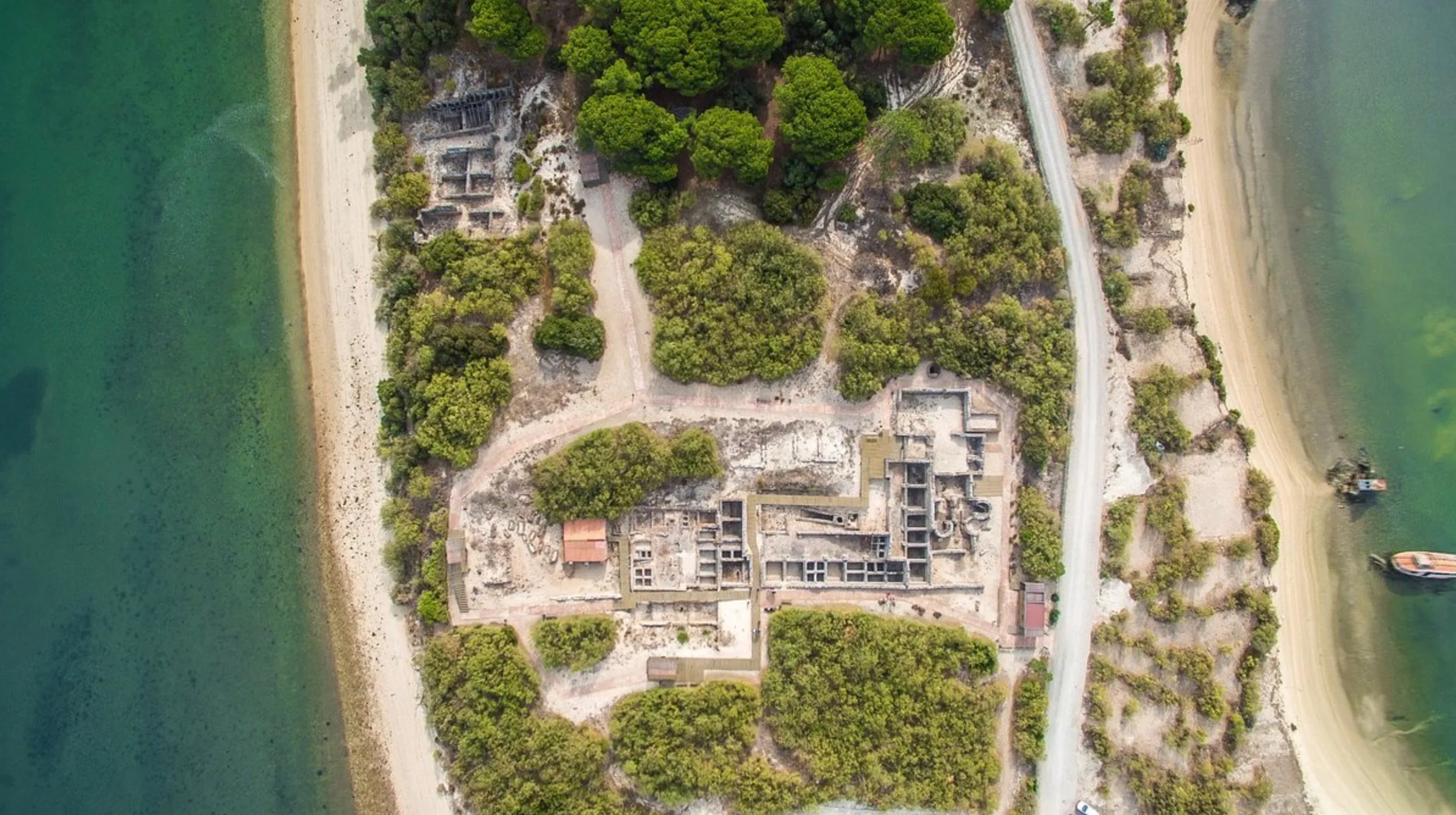
Aerial view of Tróia ruins (© Setúbal Municipality)
If you’d like to see the original outdoor tanks where garum was made back in the day, you can visit the Roman Ruins of Troia, just a few minutes from the peninsula of Troia’s central area, which is in its turn easily accessible from Setúbal by a ferry boat, which runs every half hour during high season.
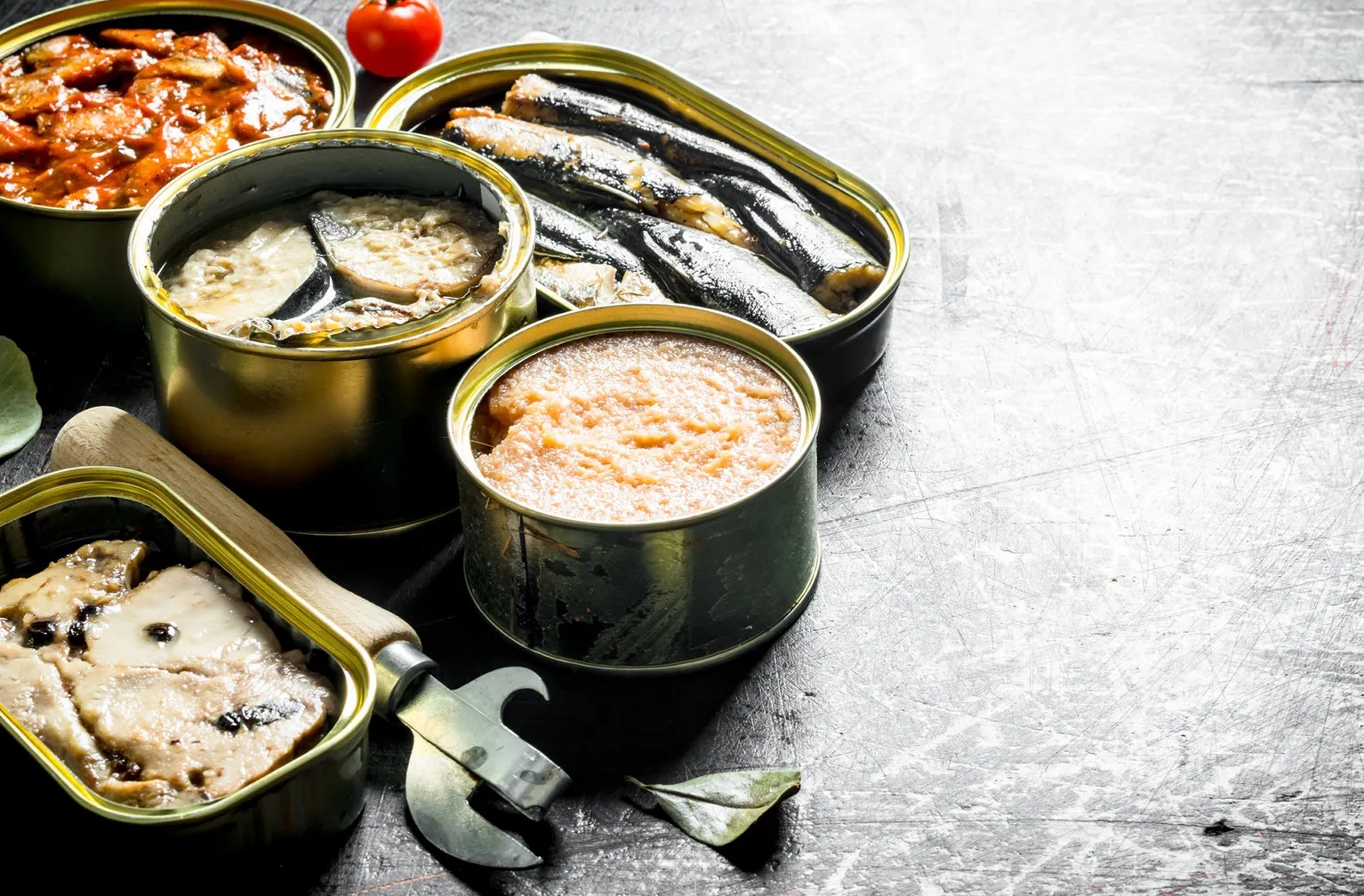
Several types of canned fish
Setúbal’s fish preserving industry
If you think Lisbon is obsessed with sardines, you should know that, in the past century, Setúbal was Portugal’s most active fishing town and one of the greatest specialties were sardines. The city’s economy relied to a great extent in fishing, processing (mostly canning) and exporting this species. In a little over 100 years, Setúbal was home to about 400 fish preserving factories, which were a massive source of employment for locals: men would initially work in fishing and welding of the tins, and the people doing the actual canning of the fish were in their vast majority women.
While the sardine industry drastically declined, as fish preserving factories started concentrating elsewhere in the country, Setúbal has remained very linked to the sea as a way of life. If you’d like to dig deeper into this topic when you visit the city, we recommend stopping by Museu do Trabalho Michel Giacometti (Largo Defensores da República), which is an ethnographic museum housed in the building of a former cannery, as a part of a fishermen village, dedicated to showcasing the history of the fish preserving in the area and the people who were a part of it, da lota à lata, that is, from the fish auction to the can.
The fall of the canning industry in Setúbal is intrinsically connected with social and workers movement in the area. With the mushrooming of factory units, the working conditions suffered a decline but as decades went by, workers united in trade unions and started demanding better working conditions. This social uprise with the effects which were felt after World War II ended, and there was a reduced demand for canned goods which were until then crucial to feed troops, eventually lead to factories starting to close.
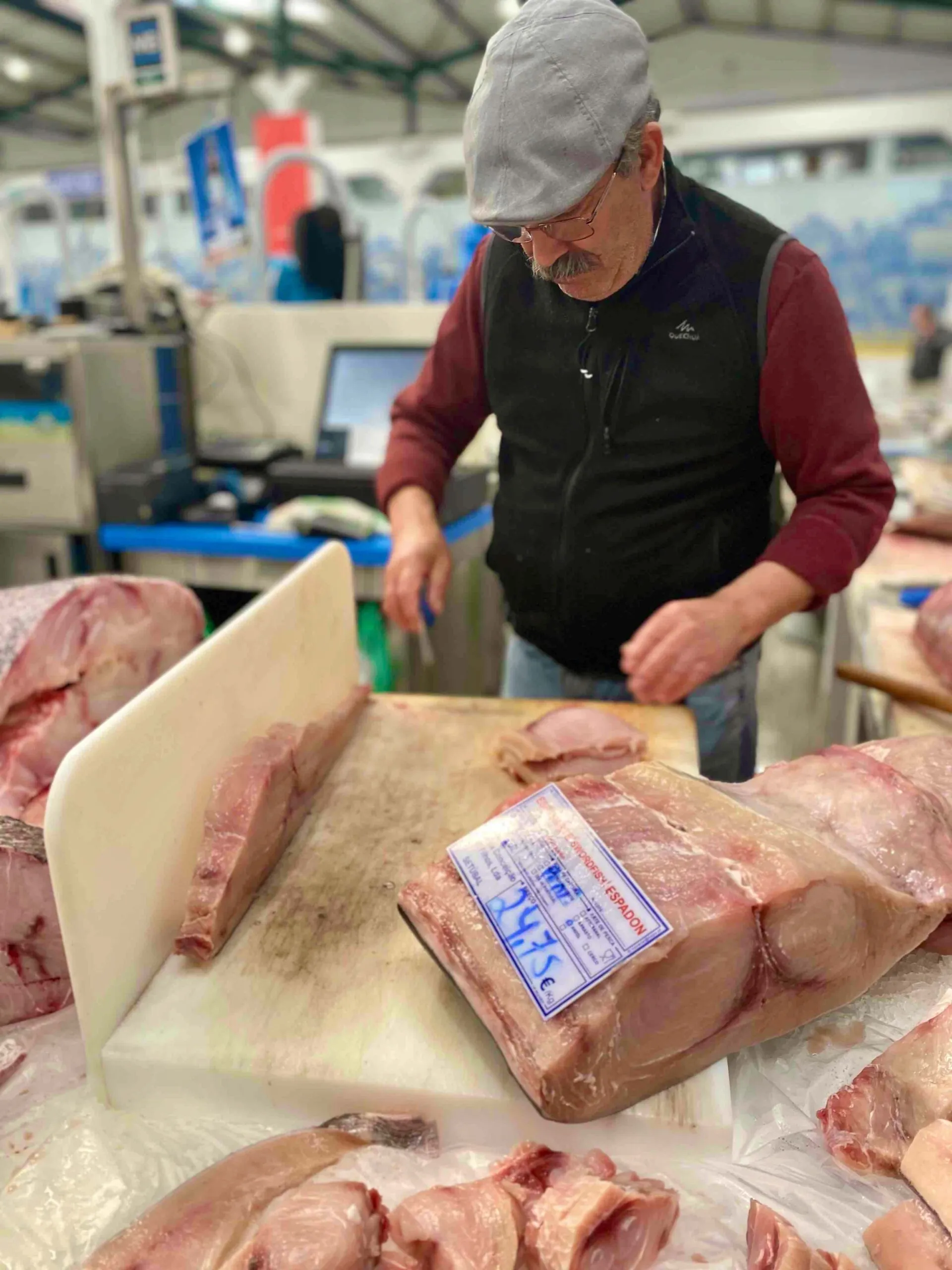
Our favorite stall at Mercado do Livramento
Buying and eating fish and seafood in Setúbal
The area around Setúbal has always had exceptional geographical and climate conditions very prone to making a living from the sea, where the variety of fish has since many centuries ago inspired shellfish gathering and fishing. Historically, the people of Setúbal could extract products from both the sea and the river.
The area between Setúbal and Sesimbra is known as the Costa Azul, that is Portuguese for blue coast, and it is an area which attracts both beach goers as well as fishermen (professional but also amateur). The species of fish found in this area of course depend on the season, but include popular varieties such as sea bass (robalo), snapper (pargo), turbot fish (pregado), monkfish (tamboril), amongst many others, such as the seasonal red mullet (salmonete). Sharks are also present in these waters, namely the great blue shark (cação-azul) and the shortfin mako shark (tubarão-mako-cavala).
Setúbal’s Mercado do Livramento (Av. Luísa Todi 16) was highlighted by USA Today as “one of the best fish markets in the world” (alongside world references such as Tsukji market in Japan) and it is a great starting point to begin exploring the fish and fishing culture of the region of Setúbal. This massive municipal market has been open for about 150 years and even if you’re not planning to buy anything as such, it’s worth checking out to learn more about the fish, but also to appreciate the hustle and bustle with a beautiful backdrop of typical blue and white tiles (there about 5700 of them!), depicting scenes from the local daily life, including many related with the local activities of fishing and agriculture.
When you visit Setúbal, you will probably come across choco frito. Thick strips of battered and deep-fried cuttlefish are the local obsession and folks from nearby towns, namely a lot of us gourmands from Lisbon, are known to flock to Setúbal for the sake of enjoying a hit-the-spot meal of choco frito with simple sides such as fries, salad and a wedge of lemon to be squeezed on the spot for a touch of freshness and acidity to balance out the fat. Believe it or not, choco frito is one of Setúbal’s big tourist attractions! Fried cuttlefish strips were popularized in the past century as a fishermen snack, namely something to be enjoyed with drinks on the workers day off as they’d socialize with a glass in hand. Because of the incredible high demand today, a lot of the cuttlefish which is used to make this local speciality, is actually imported from far away places, namely the Indian ocean – how crazy is that? Curiously enough, this is a fact that a lot of Portuguese are unaware of as they munch on their choco frito à setubalense, convinced that it indeed does taste better in Setúbal because of the proximity with the sea.
The cuisine of Setúbal district: typical dishes, desserts and local wines
Traditional recipes from Setúbal region
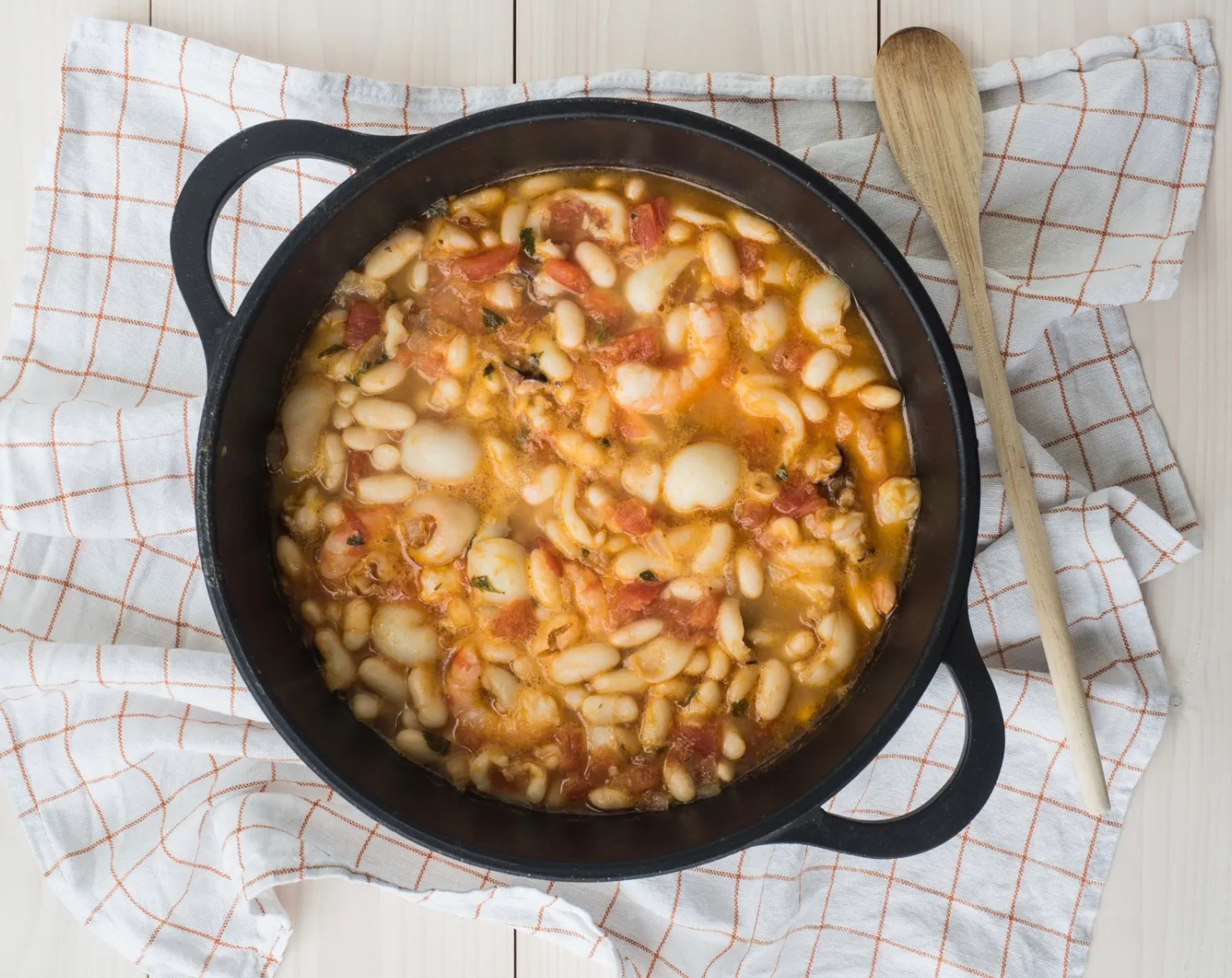
Feijoada de choco
It is clear by now that the most typical recipes around Setúbal rely on fish and other seafood as main ingredients. Besides the uber popular choco frito, other specialities you shouldn’t miss in the area include feijoada de choco, a white beans stew simmered in a tomato rich broth, also featuring chunky strips of tender cuttlefish; and caldeirada à setubalense. There’s virtually no Portuguese fishing town that doesn’t have a caldeirada as part of its old time culinary repertoire. In Portugal, caldeirada is the equivalent of French bouillabaisse, that is, a versatile stew which features variable pieces of fish and seafood, depending on the catch of the day. Even though caldeiradas are very much appreciated today and aren’t usually a cheap meal, looking back in history, we can understand how the origin of caldeirada is a humble one. This would be the kind of meal fishermen would cook at home, with whatever pieces of fish they couldn’t manage to sell or, simply with scraps of what didn’t particularly have commercial value. Add little pieces of fish to a broth that will make them taste good, bulk up the stew with a generous amount of potatoes and other vegetables like onions and peppers, and you’ve got yourself a one pot meal perfect to comfort your belly and feed the entire family!
Like in every other coastal area of Portugal, simple meals or fresh fish grilled over charcoal are also commonplace. Don’t be surprised if your restaurant menu does not mention what are the side dishes that will be served with your order of fish. This tends to be so standard that us locals already know that if we ask for grilled fish, the most likely elements to also be included in the plate will be boiled potatoes and steamed vegetables such as carrots, broccoli or green beans. On the other hand, fried fish is most commonly served with loose and saucy rich dishes such as kidney beans rice (arroz de feijão) or brothy tomato rice (arroz de tomate).
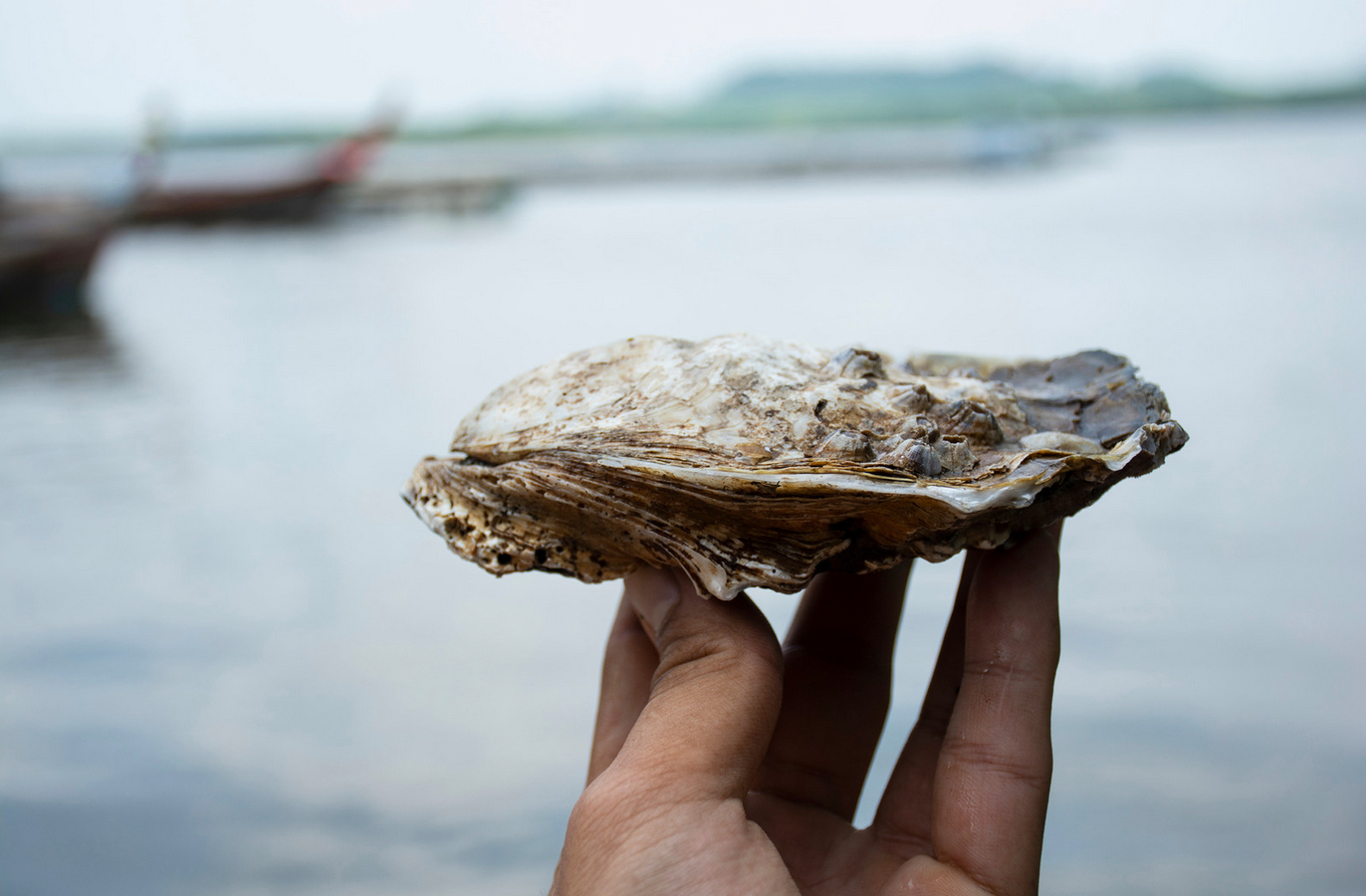
Oyster from Sado
Oyster lovers will also have it good in Setúbal as the nearby Sado river is one of Portugal’s most important oyster production areas (the others would be Ria Formosa in the Algarve, and Ria de Aveiro in the center of the country). Just like the fish canning we talk about above, the industry of oyster production in the Sado Estuary lived its golden age in the previous century, when oyster production employed up to 4000 people in the area, mostly because of high demand for export to France. As other industries started developing around Setúbal, the waters of the Sado river started being polluted and this sadly and rapidly dictated the decline of the oyster production. Now-a-days, with much tighter waste management laws and water controls, the Sado river is once again propitious for oyster cultivation, but this is now done on a much smaller scale. As such, the ostra do Sado has become an object of great desire, certainly not as affordable as back in the day, but much sought after by seafood connoisseurs. We particularly admire the work of Neptun Pearl, owned by Célia Rodrigues, which has been determinant in the revival of the Portuguese specie named ‘crassotrea angulata’.
Other river specialities coming out of the Sado include enguias, or European eels, that is fish that could easily be mistaken with snakes – one would certainly know the difference as fish have a bone skeleton and snakes do not. Eels are a river species in very heavy decline, and which are in any case only found seasonally, roughly between the months of March and June. Eels can be cooked in a variety of ways, being the most typical around Setúbal stewed (ensopado de enguias), or fried (enguias fritas).
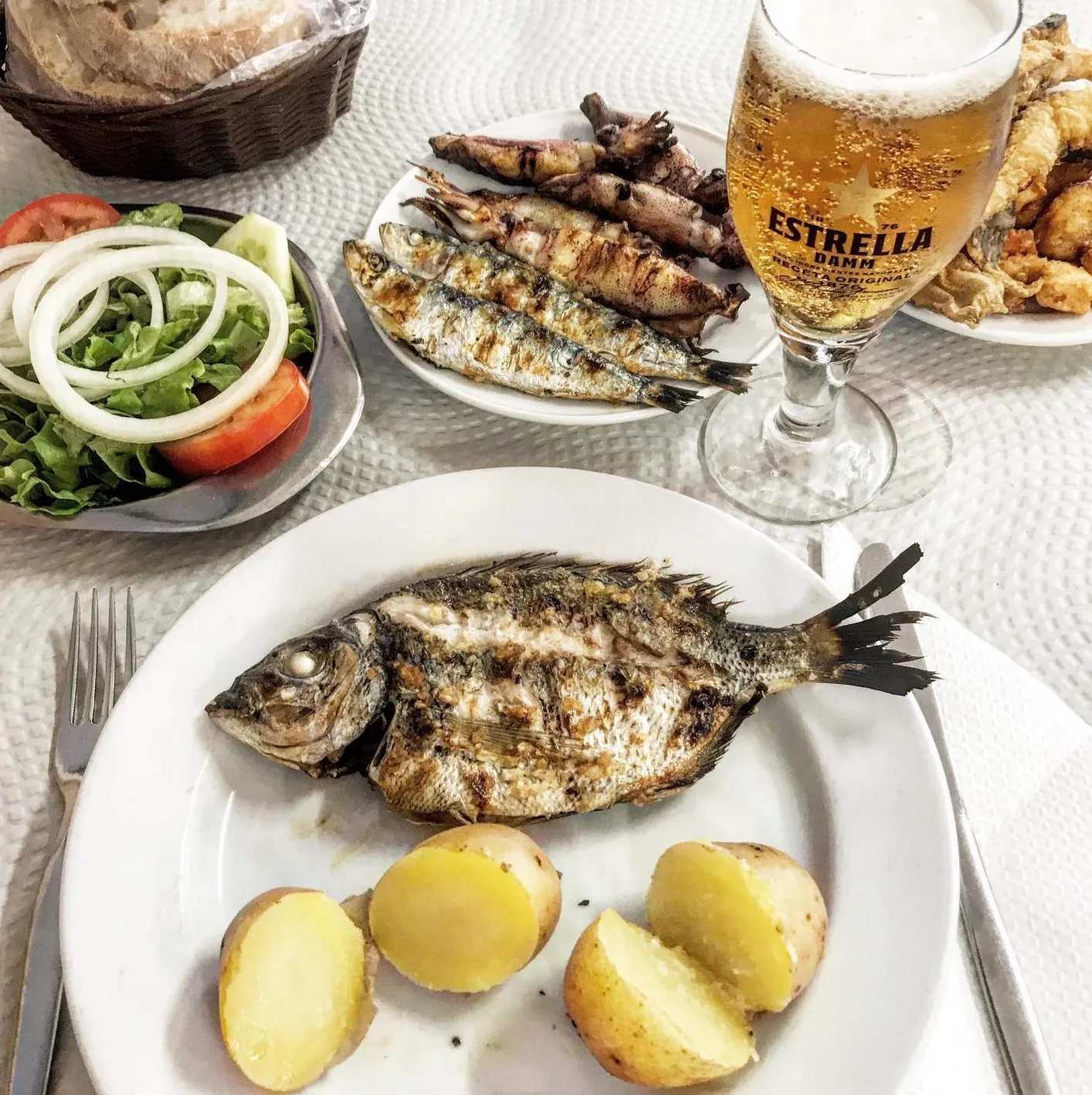
Âncora Azul restaurant (© Âncora Azul)
Best fresh fish and seafood restaurants in Setúbal
Of course there’s so much more than fried cuttlefish in Setúbal! And this is something we’d definitely recommend exploring when you visit the city. As fresh fish and seafood meals are indeed what stands out, it’s important to keep in mind that, generally speaking, Monday is the least recommended day of the week to indulge in sea delights. Not only you will find that many establishments take Monday as their rest day, this is also the day when you can, as a good rule of thumb, expect your ingredients to be the least fresh. They’ll be perfectly edible, of course, but to really taste the brightness and quality of the local seafood, we’d recommend going out any other day of the week, as on Sundays fishermen don’t usually work and there are no fish auctions, therefore, no new ingredients arriving at the restaurants.
Âncora Azul, which is a part of the Clube Naval Setubalense (Avenida Jaime Rebelo 41) is one of our favorite restaurants in Setúbal. For when you feel like splurging a little, Casa do Mar (Av. José Mourinho 74) sure knows how to grill its fish – you’d think you can’t ruin something so simple, but the truth is that not everyone out there deals with the excellent raw material available the same way!
O Peixoco (Av. José Mourinho 28), located by the docks of Setúbal where competition is fierce, serves a unique take of Portuguese cuisine with a French touch (because of the duo André and chef Constance), and pays particular attention to sustainability. We love their signature takes on local fish and cuttlefish, when everyone else around them is doing things the same (but arguably good) old way. This is also a good spot to try fresh oysters from the Sado.
Troino is a typical fishermen neighborhood in Setúbal and, as you can imagine, an ideal location to go for uncomplicated fresh fish meals. Oftentimes, particularly in the summer, restaurants will place their grills outdoors, something which is bound to open your appetite as you explore the most typical parts of the city. At Casa Morena (Praça Machado dos Santos 18) Mr. Horácio will welcome you for local fish and local wine too – during lunch hours only.
Because we risk making enemies in Setúbal if we don’t recommend at least one restaurant for fried cuttlefish, allow us to mention Casa Santiago (Av. Luísa Todi 92), which opened back in 1974 and goes by the nickname “rei do choco frito” (the cuttlefish king). Their secret is to fry the strips of cuttlefish in a mix of vegetable oil and pork lard, which gives the fish more depth of flavor. Here you can enjoy the typical choco frito with standard sides of fries and salad, or ask for it in a sandwich (sandes de choco), which is a great snack if perhaps you already had lunch elsewhere.
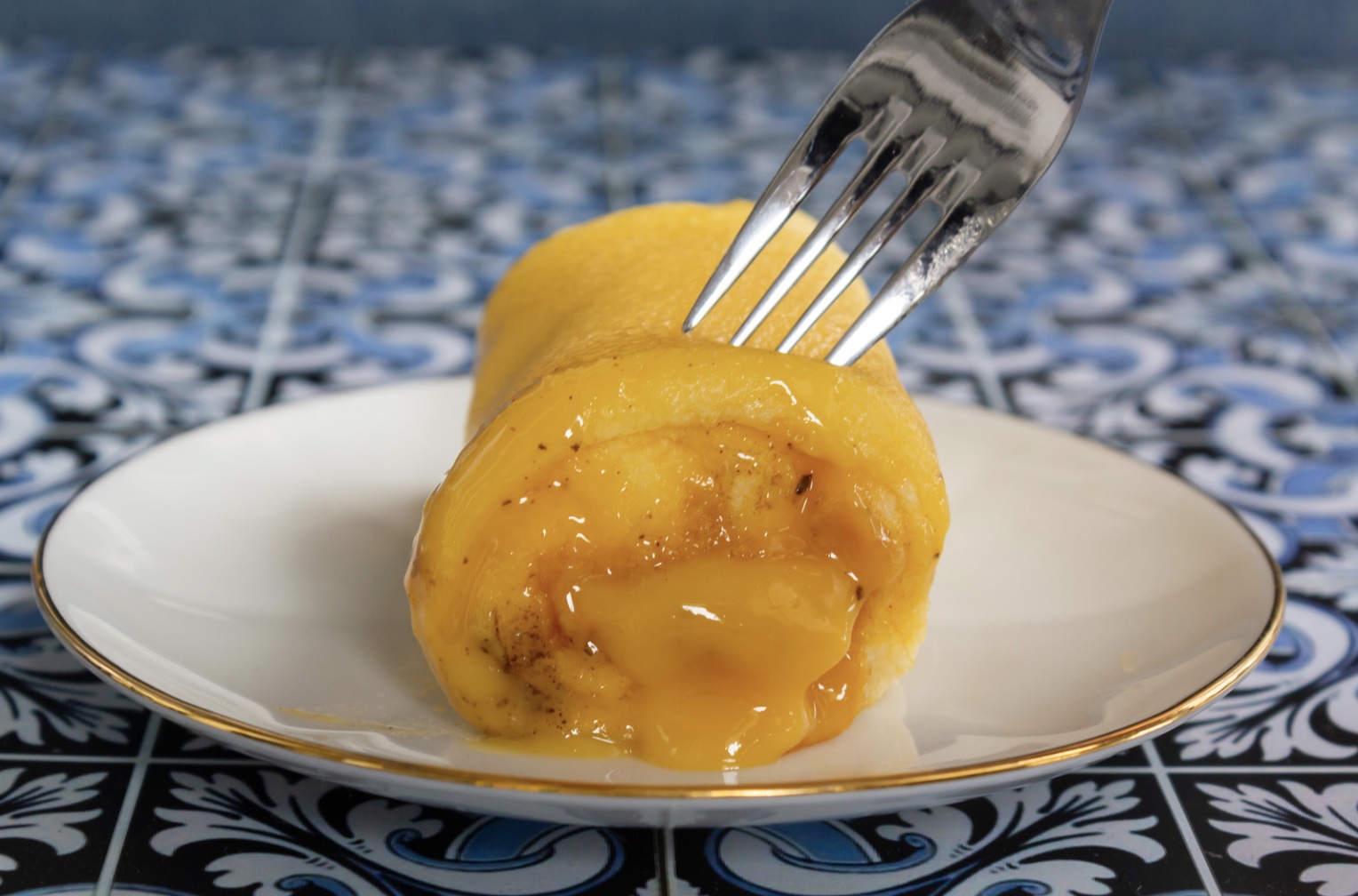
Stops for a sweet bite in Setúbal
Setúbal’s gastronomic delights aren’t certainly limited to savory dishes. Amongst the several sweet specialties in the area, tortas de Azeitão are perhaps the most celebrated ones. Hailing from Azeitão, a town in the Arrabida Natural park which belongs to the municipality of Setúbal, tortas de Azeitão are similar to a Swiss roll, but no cream is involved. In good Portuguese fashion a soft moist cake sheet is rolled up with a filling of rich velvety egg jam (doce de ovos), that is, a very common sweet concoction used in Portuguese pastry baking and conventual sweets making, which consists of egg yolks and sugar cooked to a specific almost caramel-like consistency. Now-a-days you can also find tortas de Azeitão with chocolate filling, but those with doce de ovos are indeed the original and traditional ones! You can taste them in Azeitão itself, or even in downtown Setúbal at the Tortas de Azeitão (Av. Luísa Todi 15) flashship store.
The history of tortas de Azeitão dates back to the beginning of the century and, funnily enough, the recipe was not developed in Azeitão itself, but instead it was brought from the Alentejo (from the town of Fronteira), specifically from a pastry shop called O Cego, later to be popularized in Azeitão by family members of the original team of O Cego. To taste the original recipe, there’s nothing like visiting Pastelaria Regional Cego (founded in 1901) in Vila Nogueira De Azeitão (Rua José Augusto Coelho 150), where it would also be worth sampling a mé-mé (an onomatopoeia of the sound that a sheep does referring to the sheep cheese used in the recipe), a petit confection made with phyllo pastry, cottage cheese and an egg jam topping; or the ésses, the famous S-shaped cinnamon biscuits from Setúbal found here but also in many other cafes and pastry shops in the city itself.
Azeitão cheese: raw, sharp, buttery and loaded with history too
 Even though queijo de Azeitão literally translates as cheese from Azeitão, this raw sheep milk cheese can be made with milk from Azeitão itself (which is a part of Setúbal) as well as from Palmela and Sesimbra. Just like the celebrated cheese from serra da Estrela (queijo da serra) in the central mountainous region of Portugal, the milk for Azeitão cheese is curdled with artichoke thistle flowers, which are also known as cardoons. As such, it is considered a vegetarian cheese, something which isn’t all that common, as many of Europe’s most well-known cheeses are prepared with animal rennet.
Even though queijo de Azeitão literally translates as cheese from Azeitão, this raw sheep milk cheese can be made with milk from Azeitão itself (which is a part of Setúbal) as well as from Palmela and Sesimbra. Just like the celebrated cheese from serra da Estrela (queijo da serra) in the central mountainous region of Portugal, the milk for Azeitão cheese is curdled with artichoke thistle flowers, which are also known as cardoons. As such, it is considered a vegetarian cheese, something which isn’t all that common, as many of Europe’s most well-known cheeses are prepared with animal rennet.
This PDO cheese started being produced in the 19th century, and it is not at all a coincidence that its popularization happened after that of cheese from Serra da Estrela, as queijo de Azeitão was precisely inspired by queijo da serra! It was a man called Gaspar Henriques de Paiva who had come from the Beira Interior region, where Serra da Estrela is located, who decided to produce cheese around Azeitão with the same characteristics as his beloved cheese from his birthplace. He brought down sheep from the same breed as used in the Beiras region, including the essential Bordaleira breed, and proceeded to make cheese just like back home, yet in smaller wheels (usually ranging between 100g and 250g). Both specialities are remarkably similar yet there are notable distinctions amongst them, something which comes as proof that terroir plays a major role in the flavor characteristics of different food products – thus explaining its protected denomination of origin status too.
History aside, Azeitão cheese will delight sharp cheese lovers. This is a relatively soft cheese which can’t really be cut into slices as it would disassemble. Instead, the typical way of eating queijo de Azeitão is to cut a circular lid on top, remove it, and use a spoon to scoop up its buttery interior, which can be spread on bread or toast. The flavor is strong, rather salty and with slight acidity.
Azeitão cheese is also used in sweet dishes, namely in very simple but delectable combinations such as cheese and jam, something commonly eaten in Portugal as a snack with a glass of wine, or even for a sweet dish at the end of a meal. Cottage cheese (requeijão) is a byproduct of Azeitão cheese making, and also typically used in the region, particularly for the cheese and fruit preserve combo we speak of.
Queijo de Azeitão can be purchased in regular supermarkets across Portugal, or in specialty food stores such as Manteigaria Silva (Rua D. Antão de Almada 1) in downtown Lisbon. But if you’d like to go to the source, not only to buy Azeitão cheese but to also learn more about how it is produced, you could also visit Queijaria Simões in Palmela (Rua El Rei D. Dinis 40), which puts together guided visits to promote this regional cheese.

Setúbal Peninsula wine region
The Setúbal Peninsula is one of Portugal’s 14 demarcated wine regions, spanning across mainland Portugal as well as our archipelagos, such as the Azores, including the PDO (protected denomination of origin) Pico island and its peculiar volcanic wines, which we explore on highly curated and immersive ethnographic and culinary trips.
The Setúbal Peninsula wine region includes the PGI (protected geographical indication) area of Península de Setúbal, as well as DO (denomination of origin) wines of specifically Setúbal and Palmela. Its terroir is quite particular as this is an area where the climate is somewhere between subtropical and mediterranean, and the soils are clearly influenced by their proximity to the sea, but also the Tagus and the Sado rivers, as well the several hills and mountains all around.
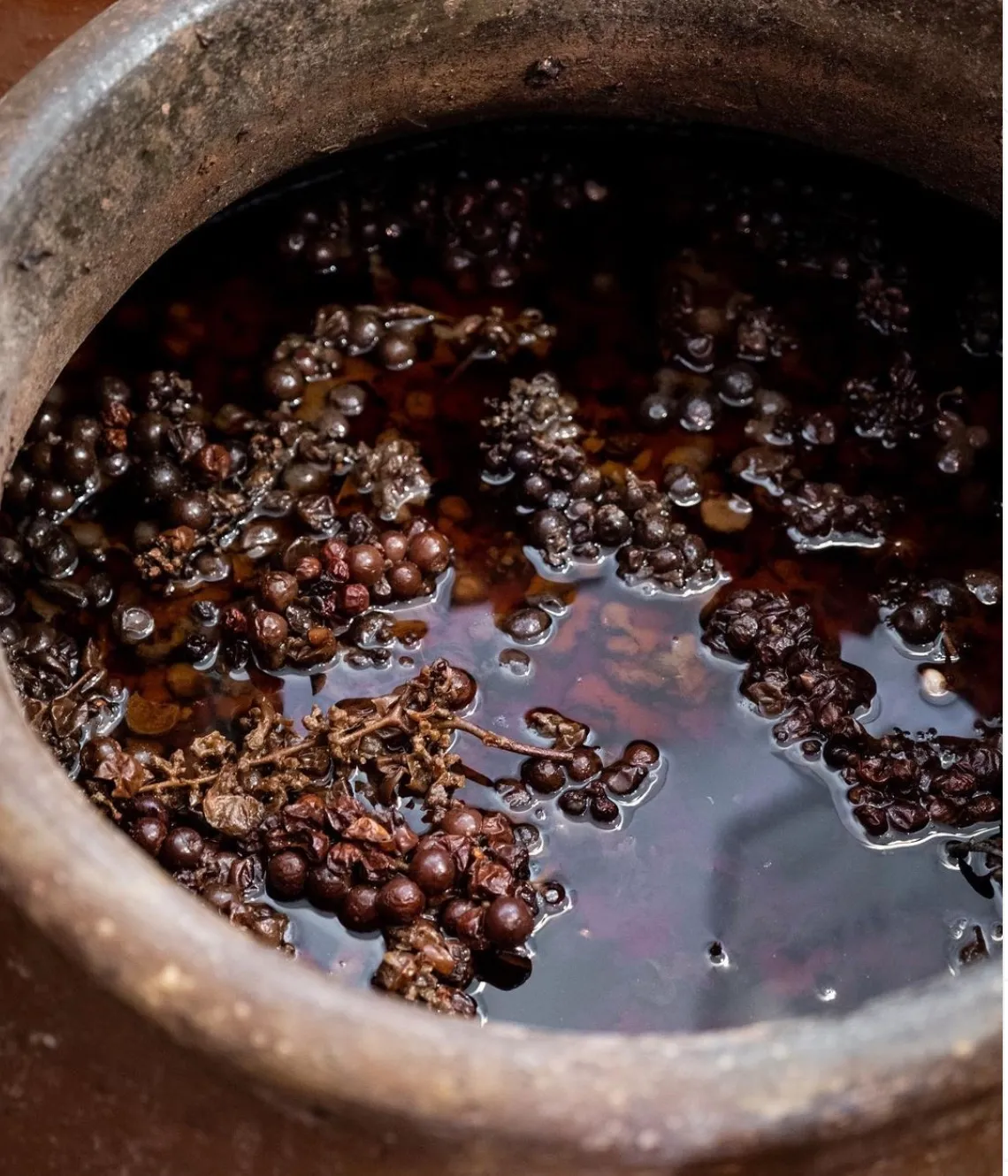
Moscatel Roxo grape at Casa Agrícola Horácio Simões, one of our favorite wineries
Some of Portugal’s largest (and most well-known) wine brands, namely José Maria da Fonseca, Casa Ermelinda Freitas and Bacalhôa, are headquartered on the Setúbal Peninsula. While in the area there’s a variety of wines being produced, the most notable one is the fortified wine known as Moscatel de Setúbal, which presentes an alcoholic volume between 17º and 18º. This sweet wine is prepared with Muscat grapes and left to age in oak barrels until it has an amber color and aromas of caramel and dried fruits. Moscatel de Setúbal may even linger on your palate as an aged aceto balsamico di Modena would do. While Moscatel de Setúbal is more widespread in its red variety, it is also available as a white fortified wine.
If you prefer table wines, the Setúbal Peninsula houses many wineries and the good news is that many of them are open to welcome travelers eager to visit and, of course, not only to check out the vineyards and cellars, but to also participate in a wine tasting experience. If you’d like to visit one of the big brand names, you could go straight to the Museum House by José Maria da Fonseca, a place with more than 200 years of history, where different tours and wine tasting experiences are on offer. In Azeitão you will find Bacalhôa Palace, where you can do wine tours which may include a visit to the winery museum, to the exhibition at the palace and, of course, selected tastings. Generally speaking, we’re fans of discovering and supporting smaller producers. And so if you travel to Setúbal, where there are over 600 wine brands present, we’d highly recommend stopping by an independent winery, such as Casa Agrícola Horácio Simões (where every visit is personalized according to your interests), Adega Fernão Pó (were you can sign up to shadow a winemaker for a day and learn a great deal, particularly during the harvest period) or A Serenada (where you can even overnight in a stunning property nestled in nature).
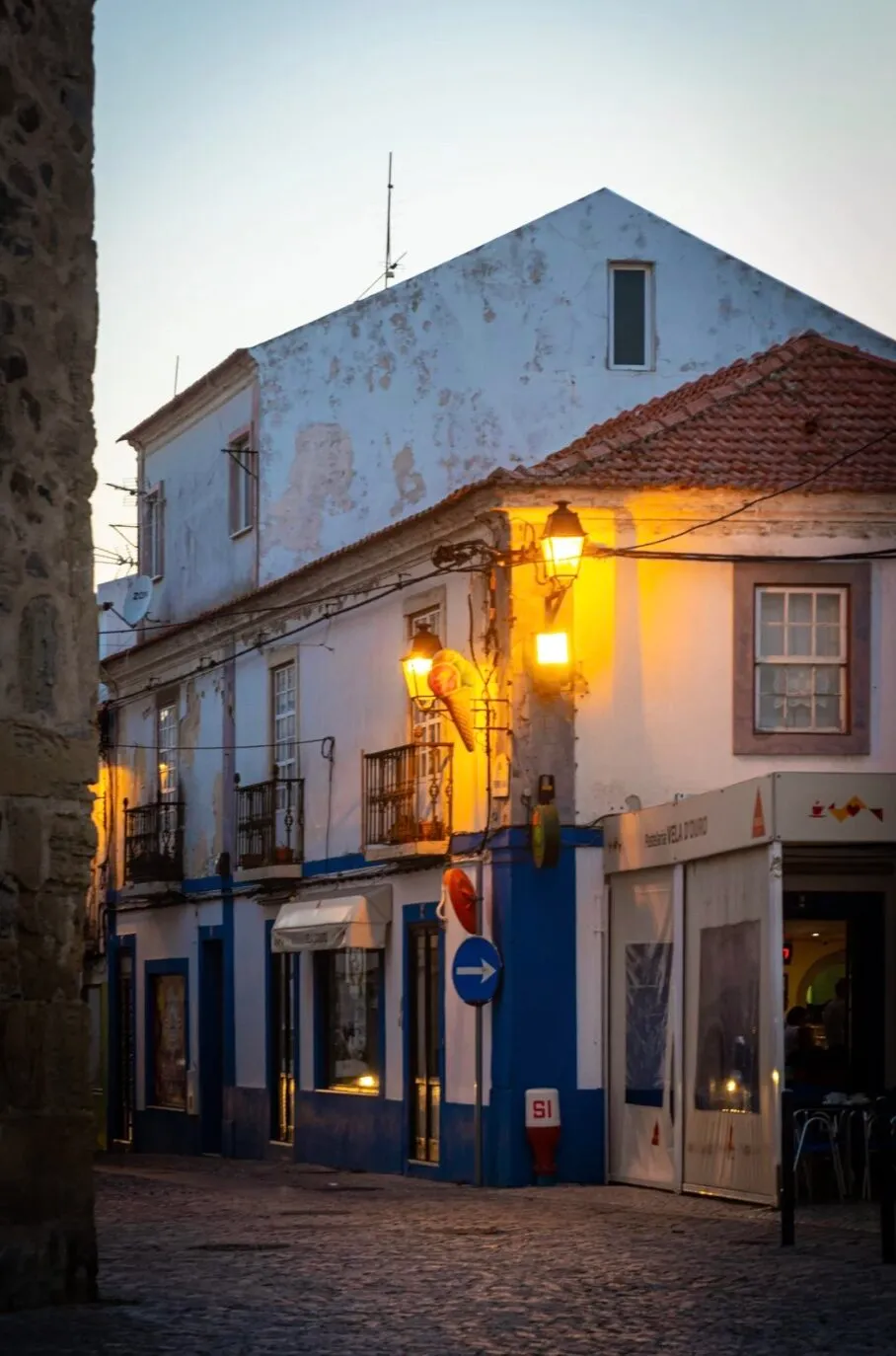
Exploring Setúbal restaurants and nightlife it’s also an opportunity to be immersed in the city streets.
Nightlife in Setúbal
We have got to admit that we are particularly fond of the nightlife in Setúbal! If during the day there are no shortage of eateries all over the city, the same happens at night, where there are many bars to choose from to go hang out and drink at. In fact, if indoor bars aren’t your scene, there’s plenty of outdoor terraces (esplanadas) where you can just chill with a drink. As one would easily foresee in a city with lovely views, there are also trendy rooftop bars with incredible views towards the Sado river.
The rhythm of Setúbal’s nightlife surely suffers some changes during the summer, when the city and surrounding areas do not only receive tourists, but are also more visited by folks coming from the Great Lisbon area. During the summer, watching the sun go down in the late hours at one of the beach bars of Comporta (see below), sounds like a nice plan. All year round, Setúbal’s city center is where the buzz is at! Bar Absurdo (Av. José Mourinho 24), for example, is a cool place to hang out at, not only over drinks, but also enjoying their restaurant menu – this is one of the establishments in Setúbal that stays open until later in the night.
Bar hopping in Setúbal (particularly if it’s not too dark yet) you’ll get to appreciate the many street art murals which can be found across the city. In an old street called Rua do Feijão, you see doors and even electrical boxes decorated with eye-catching colorful art.
Night clubs aren’t all too common in Setúbal, but EPIC Club (Rua Guilherme Gomes Fernandes 13) could do on a Friday or Saturday night, if you are open enough to accept their rather eclectic music selection.
Setúbal district in a nutshell – what you shouldn’t miss on a day trip:
- Take advantage of the convenient train from Lisbon to downtown Setúbal
- Visit the massive Livramento market (but keep in mind that it’s closed on Monday!)
- Enjoy a meal of fresh fish, seafood or ask the locals where to really get the best choco frito
- Hop on the ferry to Troia and explore the Roman Ruins (particularly interesting after you’ve shared some hours with us during our garum dedicated tour)
- If you prefer nature instead of history, go soak up the sun at the beach in Comporta or stay active during a trek in the nearby Arrábida Natural Park
- Wind down at the end of the day with a glass of wine from Península de Setúbal wine region: have it at a winery that tickles your fancy around Palmela or, if you’re driving, buy a bottle to take back to your accommodation
- Buy edible souvenirs to take home: sharp Azeitão cheese and sweet Moscatel de Setúbal wine are a must. Mercearia Confiança de Troino (Praça Machado dos Santos 2) in Bairro do Troino, the oldest fishermen village in Setúbal, is a good place for shopping while simultaneously taking a trip back in time!
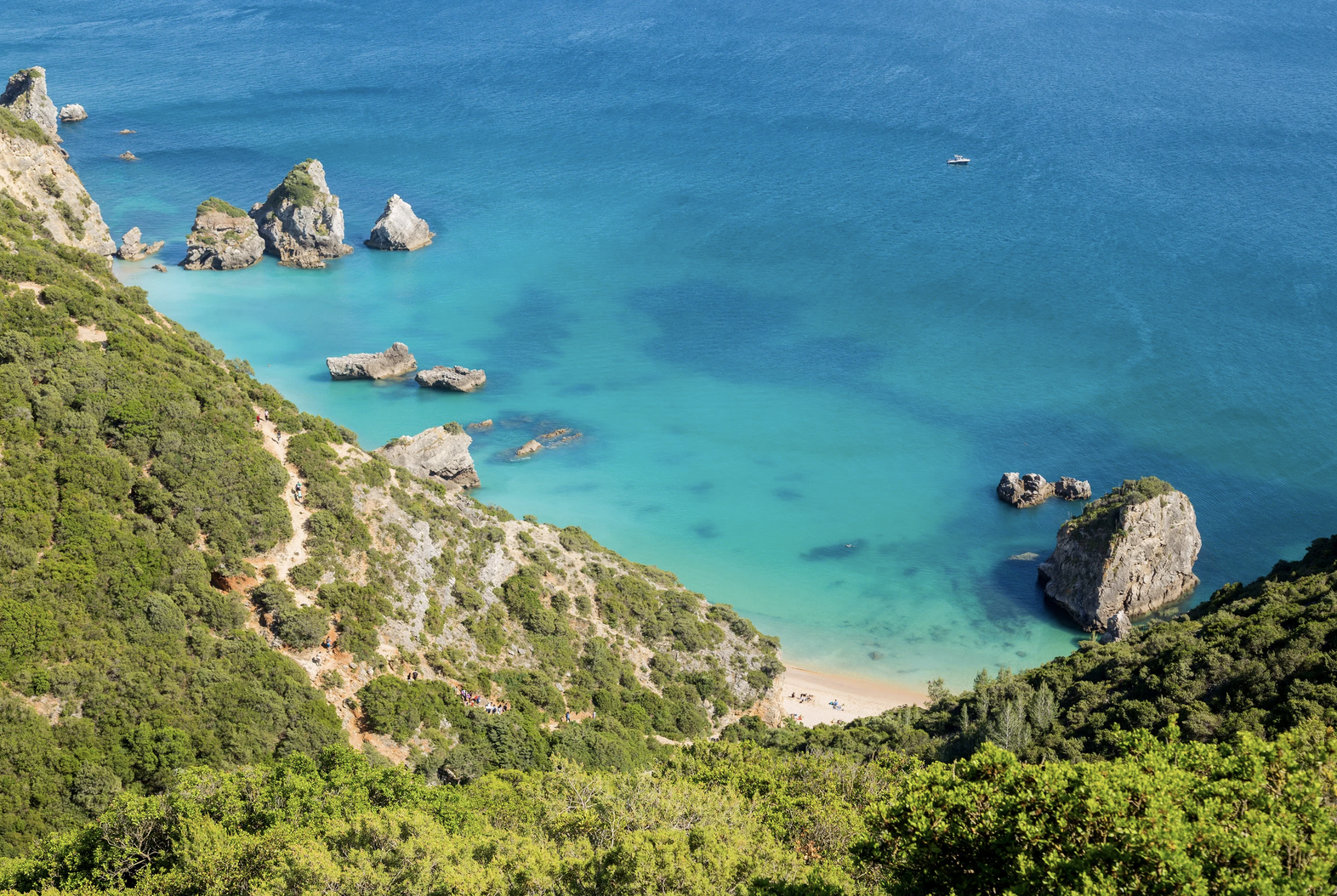
Arrábida beach
Article by :
Zara Quiroga (freelance food writer and food & cultural leader at Oh! My Cod Pico Trips)
Sílvia Olivença (anthropologist and food guide/CEO at Oh! My Cod Ethnographic Food Tours & Trips)
Want to more about Portuguese cuisine and its influences?
Fish (r)Evolution: from the Roman times to contemporary Portuguese Chefs
How Portugal influenced Indian cuisine
Alentejo and Algarve: culinary traditions of the South of Portugal
10 Portuguese Codfish recipes step-by-step
Minho, Douro and Trás-os-Montes: the cuisines of Northern Portugal (includes Porto!)

